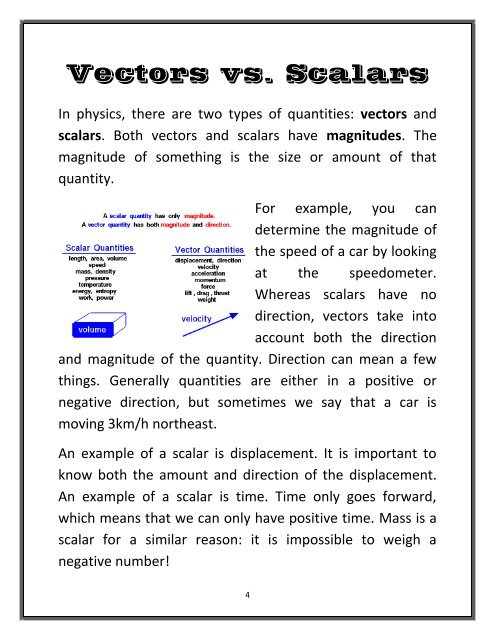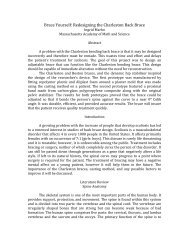The Basics of Newtonian Mechanics - the Scientia Review
The Basics of Newtonian Mechanics - the Scientia Review
The Basics of Newtonian Mechanics - the Scientia Review
Create successful ePaper yourself
Turn your PDF publications into a flip-book with our unique Google optimized e-Paper software.
Vectors vs. Scalars<br />
In physics, <strong>the</strong>re are two types <strong>of</strong> quantities: vectors and<br />
scalars. Both vectors and scalars have magnitudes. <strong>The</strong><br />
magnitude <strong>of</strong> something is <strong>the</strong> size or amount <strong>of</strong> that<br />
quantity.<br />
For example, you can<br />
determine <strong>the</strong> magnitude <strong>of</strong><br />
<strong>the</strong> speed <strong>of</strong> a car by looking<br />
at <strong>the</strong> speedometer.<br />
Whereas scalars have no<br />
direction, vectors take into<br />
account both <strong>the</strong> direction<br />
and magnitude <strong>of</strong> <strong>the</strong> quantity. Direction can mean a few<br />
things. Generally quantities are ei<strong>the</strong>r in a positive or<br />
negative direction, but sometimes we say that a car is<br />
moving 3km/h nor<strong>the</strong>ast.<br />
An example <strong>of</strong> a scalar is displacement. It is important to<br />
know both <strong>the</strong> amount and direction <strong>of</strong> <strong>the</strong> displacement.<br />
An example <strong>of</strong> a scalar is time. Time only goes forward,<br />
which means that we can only have positive time. Mass is a<br />
scalar for a similar reason: it is impossible to weigh a<br />
negative number!<br />
4
















